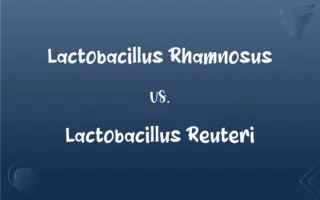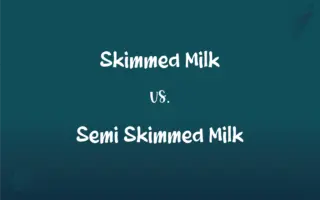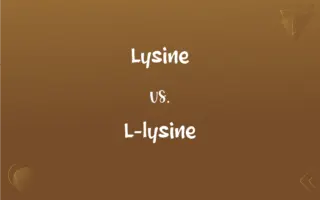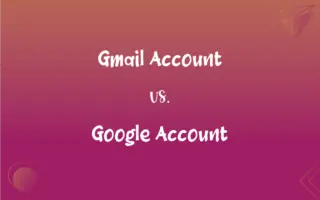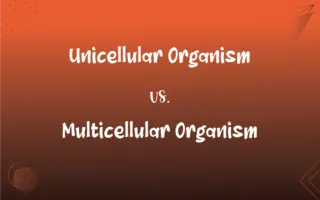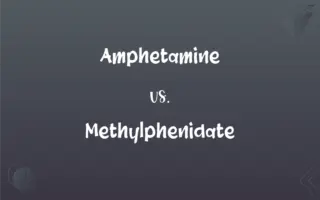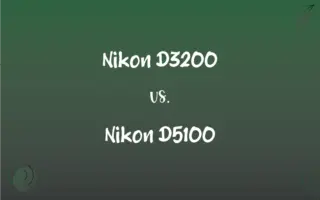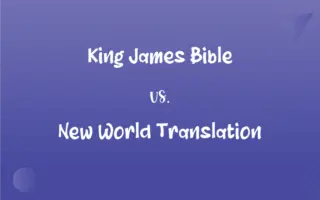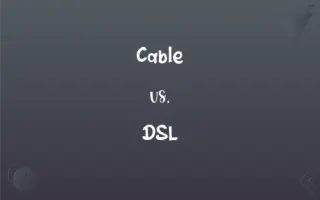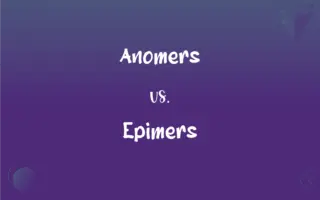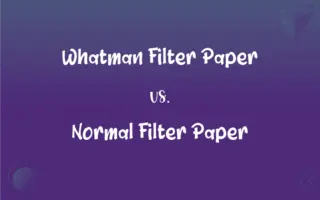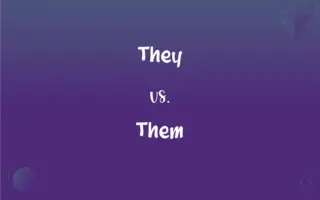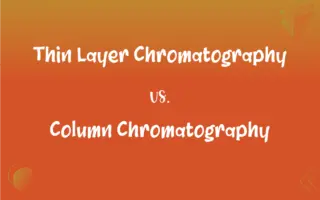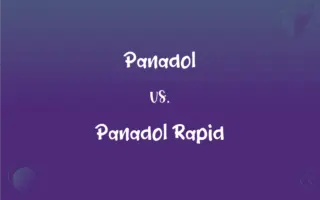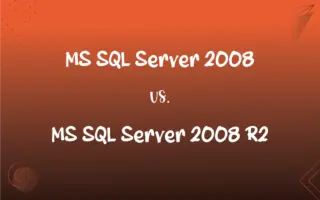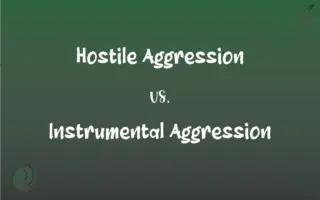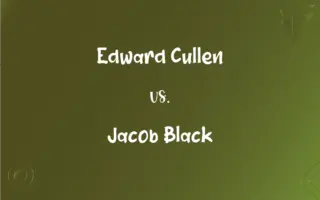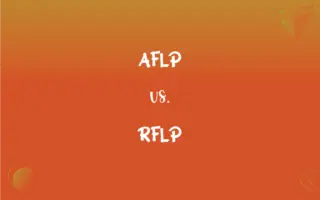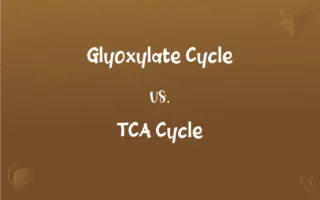MPEG2 vs. MPEG4: What's the Difference?
Edited by Janet White || By Harlon Moss || Published on February 22, 2024
MPEG2, an older standard used mainly for DVDs and broadcasting, offers lower compression, while MPEG4, a newer standard, provides higher compression and quality, suitable for digital devices and streaming.

Key Differences
MPEG2 is an older video compression standard widely used in DVDs and traditional broadcasting, focusing on high-quality video at the cost of larger file sizes. In contrast, MPEG4 is a more advanced codec, designed for digital environments, offering better compression and quality, suitable for streaming and mobile devices.
In terms of compression efficiency, MPEG2 is less efficient, resulting in larger files, which was acceptable for DVD and broadcast standards of its time. MPEG4, however, uses advanced compression techniques to provide higher quality at lower bitrates, making it ideal for online streaming and HD broadcasts.
MPEG2 supports interlaced video, which was crucial for compatibility with older television systems. On the other hand, MPEG4 supports both interlaced and progressive scanning methods, catering to both old and new video display technologies.
The adoption of MPEG2 was driven by the rise of DVDs and digital television broadcasting in the late 1990s and early 2000s. MPEG4 gained popularity with the advent of internet video streaming, mobile video, and HD TV due to its superior compression and flexibility.
When it comes to audio, MPEG2 primarily supports audio formats like MP2 and uncompressed audio, suited for its era. MPEG4, however, offers support for a wide range of audio codecs, including AAC, which provides better sound quality at lower bitrates.
ADVERTISEMENT
Comparison Chart
Full Form
Moving Picture Experts Group 2
Moving Picture Experts Group 4
Pronunciation
Spoken as "M-P-E-G two"
Spoken as "M-P-E-G four"
Use in Technology
Older DVDs, traditional broadcasting
Digital devices, online streaming
Compression Efficiency
Lower compression efficiency
Higher compression efficiency
Audio Codec Compatibility
Supports MP2, uncompressed audio
Supports AAC, wider range of codecs
ADVERTISEMENT
MPEG2 and MPEG4 Definitions
MPEG2
MPEG2 offers high-quality video suitable for DVDs.
The video quality of MPEG2 is ideal for DVD playback.
MPEG4
MPEG4 is an advanced video and audio compression method.
Streaming services commonly use MPEG4 for efficient delivery.
MPEG2
MPEG2 is a standard for video and audio compression.
My DVD player primarily uses the MPEG2 format.
MPEG4
MPEG4 is versatile, supporting both old and new video technologies.
MPEG4 works well with both my smartphone and old TV.
MPEG2
MPEG2 supports interlaced video.
Older TVs display MPEG2's interlaced video well.
MPEG4
MPEG4 supports a wide range of audio codecs.
The audio in MPEG4 videos is crisp and clear.
MPEG2
MPEG2 is less efficient in compression.
MPEG2 files take up more space due to lower compression.
MPEG4
MPEG4 supports digital environments like streaming.
MPEG4 is perfect for high-quality online video streaming.
MPEG2
MPEG2 is used in digital television broadcasting.
Broadcast channels often transmit in MPEG2 format.
MPEG4
MPEG4 offers better compression and quality.
MPEG4's compression allows for high-quality videos in smaller file sizes.
FAQs
What type of audio does MPEG2 support?
MPEG2 supports MP2 and uncompressed audio formats.
What are the advantages of MPEG4?
MPEG4 offers better compression, quality, and is suitable for digital environments.
What is MPEG2 primarily used for?
MPEG2 is used in DVDs and traditional broadcasting.
Does MPEG4 offer better compression than MPEG2?
Yes, MPEG4 provides higher compression efficiency than MPEG2.
Is MPEG4 compatible with mobile devices?
Yes, MPEG4 is well-suited for mobile devices and streaming.
Are MPEG2 files larger than MPEG4 files?
Generally, yes, MPEG2 files are larger due to less efficient compression.
Is MPEG4 good for online content?
Yes, MPEG4 is excellent for online content due to its high efficiency.
Can MPEG2 handle HD video?
Yes, MPEG2 can handle HD video but with larger file sizes.
Can MPEG4 be used for broadcasting?
Yes, MPEG4 is also used in HD TV broadcasting.
Does MPEG2 support progressive scan?
MPEG2 primarily supports interlaced video, not progressive scan.
Can I convert MPEG2 to MPEG4?
Yes, conversion from MPEG2 to MPEG4 is possible with video conversion software.
What is the main use of MPEG2 today?
MPEG2 is mainly used in DVD production and some broadcasting.
Why is MPEG4 preferred for streaming?
MPEG4's efficient compression makes it ideal for streaming over the internet.
Why was MPEG2 popular in the DVD era?
MPEG2 was popular due to its high quality, suitable for DVD standards.
What audio quality does MPEG4 offer?
MPEG4 supports high-quality audio codecs like AAC.
Is MPEG4 better for HD content?
Yes, MPEG4 is better suited for HD content due to its high compression and quality.
Are MPEG2 and MPEG4 compatible with each other?
They use different compression techniques, so direct compatibility is limited.
Has MPEG4 replaced MPEG2 in broadcasting?
MPEG4 is increasingly replacing MPEG2 in digital broadcasting, especially for HD channels.
Do modern TVs support MPEG2?
Yes, most modern TVs are compatible with MPEG2.
Can both MPEG2 and MPEG4 handle audio and video?
Yes, both standards handle audio and video compression.
About Author
Written by
Harlon MossHarlon is a seasoned quality moderator and accomplished content writer for Difference Wiki. An alumnus of the prestigious University of California, he earned his degree in Computer Science. Leveraging his academic background, Harlon brings a meticulous and informed perspective to his work, ensuring content accuracy and excellence.
Edited by
Janet WhiteJanet White has been an esteemed writer and blogger for Difference Wiki. Holding a Master's degree in Science and Medical Journalism from the prestigious Boston University, she has consistently demonstrated her expertise and passion for her field. When she's not immersed in her work, Janet relishes her time exercising, delving into a good book, and cherishing moments with friends and family.

